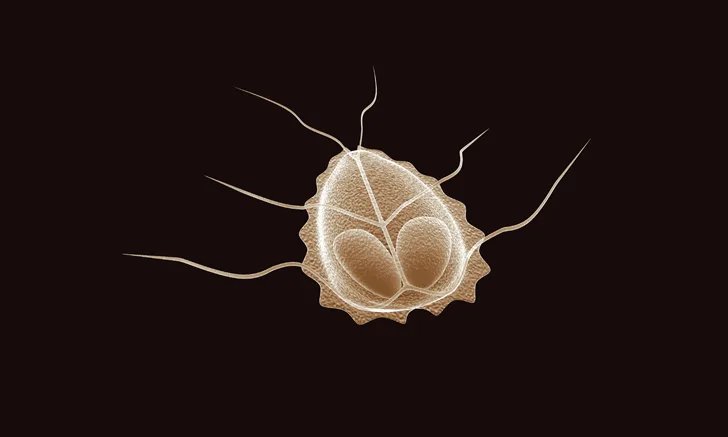Giardia spp
Andrew R. Moorhead, DVM, MS, PhD, DACVM (Parasitology), North Carolina State University

Giardia spp are protozoal parasites that infect many different animals via the fecal–oral route. After an animal ingests an environmentally resistant cyst, excystation occurs and the pathogenic trophozoites are released. The trophozoites attach to intestinal villi, causing damage and potentially resulting in the most common clinical sign, small-bowel diarrhea.1
Fenbendazole
Dogs, cats: 50 mg/kg PO q24h for 3 to 5 days1-3
Dose is extra-label and based on FDA-approved use for helminth infections.
Fenbendazole is a broad-spectrum parasiticide that primarily has activity against nematodes, along with some tapeworms.4 Like other benzimidazole anthelmintics, the mechanism of action for fenbendazole occurs via binding β-tubulin of the cytoskeleton.5
Fenbendazole is the treatment of choice for Giardia spp infections. Longer treatment times of 5 to 7 days may be required if the animal is still positive after the initial course of treatment.
No adverse effects have been noted at usual doses.
Febantel–Pyrantel Pamoate–Praziquantel
Dogs: 37.8 mg/kg, 7.56 mg/kg, 7.56 mg/kg, respectively, PO q24h for 3 to 5 days6,7
Cats: 37.8 mg/kg, 7.56 mg/kg, 7.56 mg/kg, respectively, PO q24h for 5 days8
Doses are extra-label and based on FDA-approved use for helminth infections. Longer treatment times of 5 to 7 days may be required if the animal is still positive after the initial course of treatment.
Febantel is metabolized by the host to oxfendazole and fenbendazole, the latter of which has efficacy against Giardia spp, as previously stated.9 Pyrantel and praziquantel have efficacy against certain nematodes and cestodes, respectively.
No adverse effects have been noted at usual doses.
Metronidazole
Dogs, cats: 15-25 mg/kg PO q12-24h for 5 to 7 days10 (extra-label)
Metronidazole benzoate possibly better tolerated by cats11-13
Metronidazole is a drug in the nitroimidazole class of antibiotics. Its mechanism of action against Giardia spp is hypothesized to be caused by DNA damage, specifically by interfering with helical structure.1,14
If metronidazole is used at doses higher than those suggested here, there is a possibility of adverse neurologic effects (eg, mydriasis, ataxia, tremors, seizures).1,13 At the recommended dosage, these signs may also develop with chronic use (ie, dose schedules longer than those recommended here). Therefore, longer treatment times are not recommended.
Nausea, vomiting, and lethargy may also be noted.14
Diazepam has been used to treat metronidazole toxicosis in dogs.15
Environmental Management
Because Giardia spp transmission results from ingestion of environmental cysts, cysts should be removed or destroyed. Methods include1:
Daily removal of feces from litter boxes and common areas inhabited by animals
Steam cleaning contaminated floor surfaces and furniture
Regularly washing feeding bowls and toys with hot, soapy water
Bathing the infected animal to remove fecal matter from the hair. If bathing is not possible, wiping fecal-contaminated areas after each bowel movement is an alternative.
Chronic Giardiasis
Some dogs may continue to shed cysts despite repeated treatment. In these cases, the animal’s entire environment should be examined, including areas that are considered less frequented, and repeat treatment is warranted.